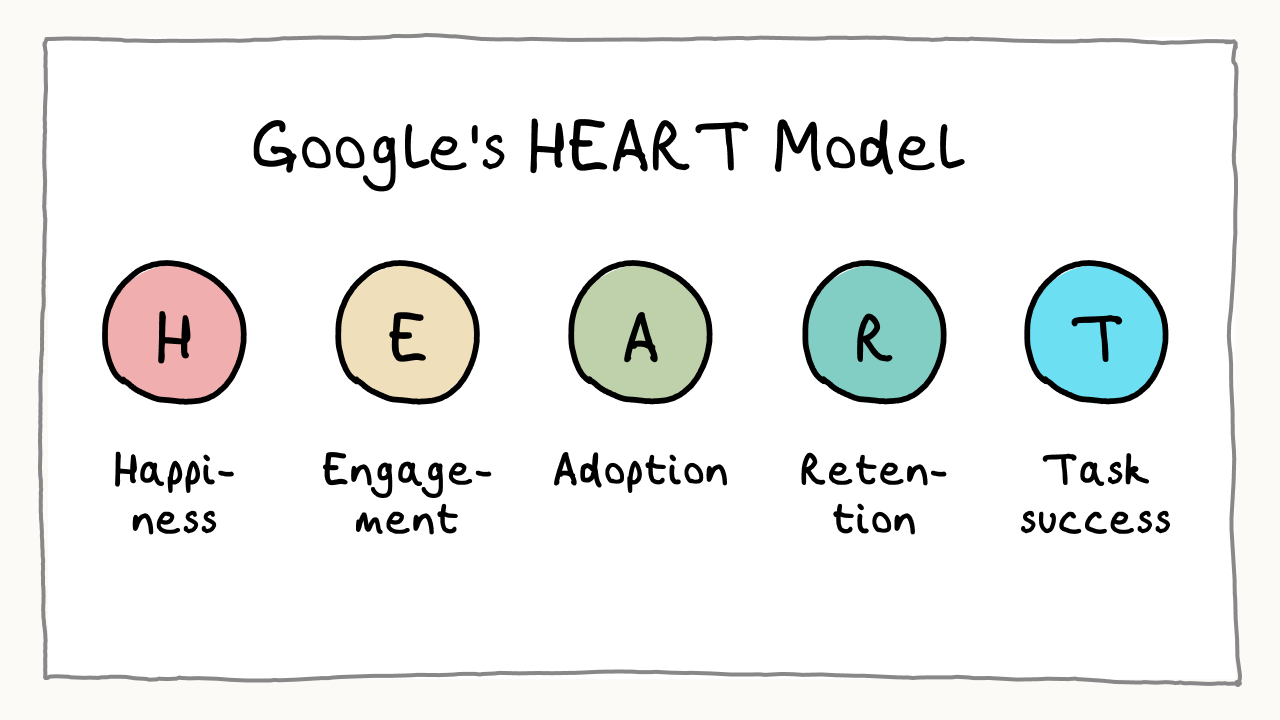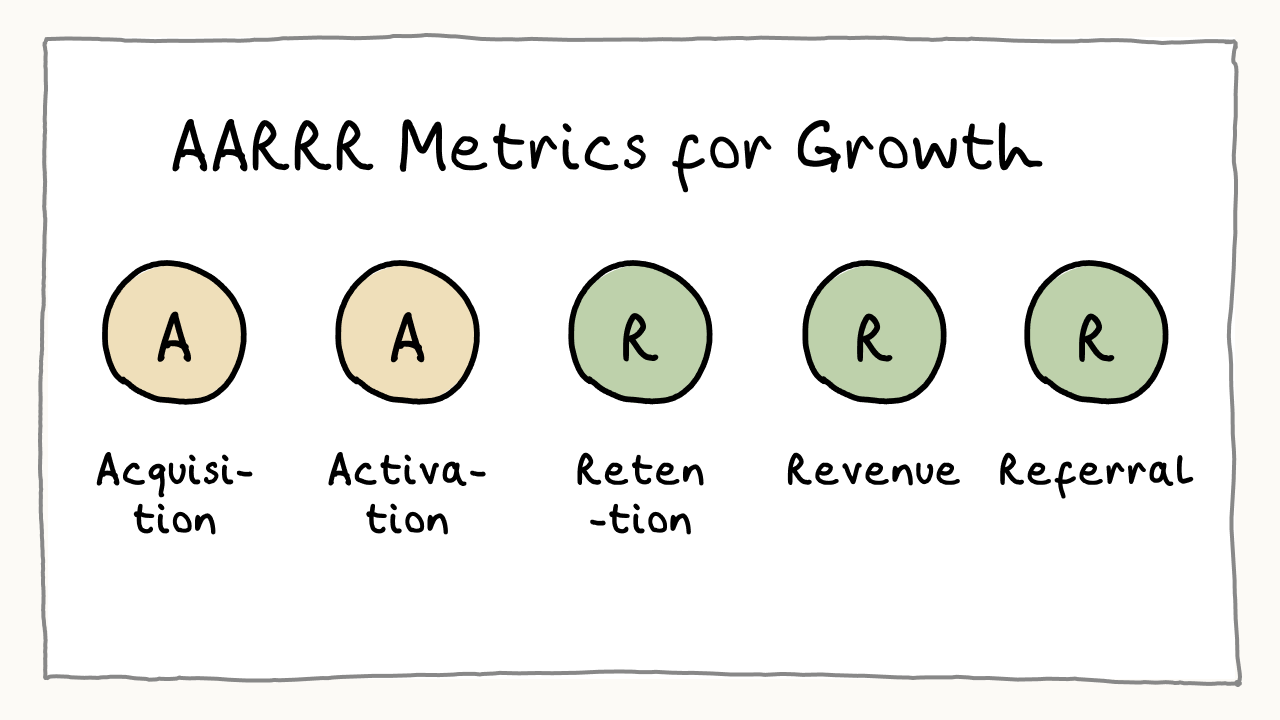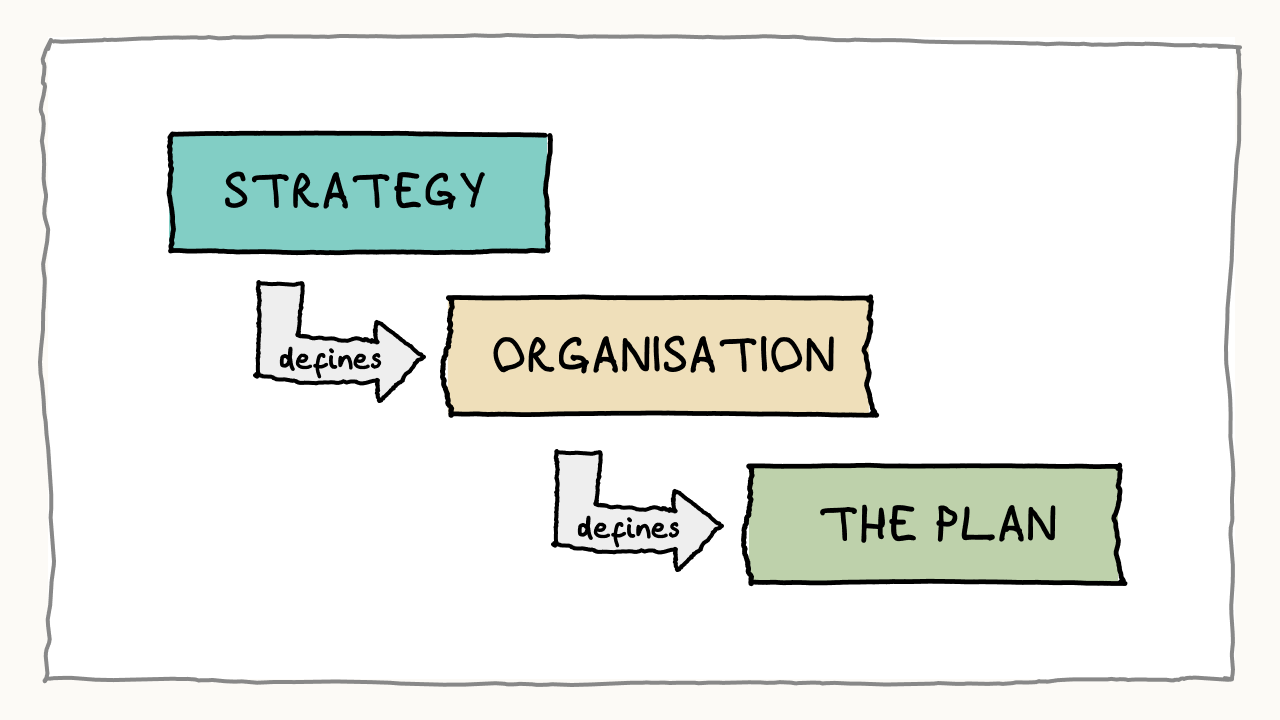How to Organise Your Leadership Team
Written by Dave Bailey
The journey of growing a small group of founders to a company of hundreds or thousands of people is not as different as you might think.
Ask someone at an early-stage company what they do and you’ll probably get the answer: ‘A little bit of everything.’
A lack of role clarity usually isn’t a problem when the team is small. Indeed, it can increase a team’s agility because problems can be implicitly assigned to the person who found them. It’s a bit chaotic, but it works.
As the company grows, so does the need for structure. Specialists come in to professionalise each area of the business, and reporting lines are drawn to ensure information flows up and down the organisation, enabling the CEO to remain accountable.
I’ve spent hours brainstorming different ways to organise my companies. I reasoned that every company was different, every organisation would be different too. However, I learned that org charts are more similar than you might think.
The ‘Standard’ Way to Organise a Tech Company
Yes, every tech company is different, but the organisational variations are relatively small.
This isn’t for lack of trying. Founders are a creative bunch and many have tried to find a better way to organise their companies, such as Zappo’s Holacracy, Buffer’s Horizontal Structure, and Valve’s Boss-free Organisation. However, to my knowledge, none have succeeded.
Here is a template that illustrates the typical org structure of a generic, medium-sized tech company.
 Typical org chart for a tech company
Typical org chart for a tech company
Your company is likely to be slightly different. For example, not all the roles may be relevant and others may be missing. Some roles might be combined and the reporting lines may differ (I’ve drawn all reporting lines to the CEO, to avoid the implication that one function is subordinate to another. Nine direct reports for the CEO is probably too many, but I’ll leave you to juggle that particular hot potato).
Key summary:
- CEO: ‘Align the team around the mission’
- Operations: ‘Keep the machine running smoothly’
- Product: ‘Build the right product’
- Technology: ‘Build the product right’
- Growth: ‘Engineer growth into the product’
- B2C Marketing: ‘Drive relevant traffic’
- B2B Marketing: ‘Start conversations with potential leads’
- Sales: ‘Generate revenue’
- Customer Success: ‘Create great client outcomes’
- CFO: ‘Manage the finances’
- HR: ‘Nurture talent’
Let’s go through each part of the organisation together.
CEO: ‘Align the team around the mission’
The role of the CEO is to set the vision, build a great leadership team, and give them the resources they need to succeed. No founder starts as a ‘pure’ CEO — they start as an operator. Over time, they do more delegating to make space for strategic thinking, recruiting, team coaching, and managing key relationships with investors and partners.
Common metrics for the CEO:
- The company’s North Star metric
- The company dashboard (usually based on the business model)
- Runway — the number of months of cash in the bank
Classic dilemma: Is it possible for two co-founders to be CEO?
When there are just two co-founders, the term co-CEO might seem appropriate. After all, you’re sharing all of the roles, so why not share the CEO role too? However, as David Brown of Techstars says in Why Co-CEOs Are a Bad Idea for Early-Stage Startups, Almost Always, having two CEOs can eventually lead to power struggles, stalemates, and conflict. Some investors even make choosing a single CEO a requirement for investing.
Operations: ‘Keep the machine running smoothly’
Operations get the business model and the operating system to work together. The COO is often the CEO’s right hand, filling in where the CEO can’t. They typically lead all non-product operations, project management, and, in earlier-stage companies, functions like HR, finance, and legal.
Common metrics for operations:
- Operational KPIs, such as efficiency and output
- Functional KPIs, such as process measures, monthly new hires, and burn-rate
Classic dilemma: When is the right time to hire a COO?
For some companies, the COO will be a co-founder. Otherwise, you’ll typically want to hire one when the CEO becomes maxed out. Recently, there’s been a trend for CEOs to hire a Chief of Staff before a COO, to help ease the pressure.
Learn new skills every week ->
Product: ‘Build the right product’

Product’s objective is to understand customer needs and translate them into valuable, usable, and feasible product requirements. On a product team, you might find customer researchers, rapid prototypers, designers, data analysts, and product owners forming part of a scrum team.
Common metrics for product teams: (using Google’s HEART framework)
- Happiness, such as net promoter score or PM-fit survey
- Engagement, such as visits per user per week
- Adoption, such as the percentage of users that use a product or feature
- Retention, such as the percentage of users that log in 30 days after sign up (D-30)
- Task success, such as the time to complete a particular task
Classic dilemma: Can the CEO also be the Head of Product?
At an early-stage, some product-flavoured CEOs play the role of product owner too. But as CEO duties take up more time, they have less time to dedicate to product management. Eventually, product-CEOs need to pass the reigns to someone who can do the job full time.
Technology: ‘Build the product right’

Technology, also called engineering, is focused on developing a reliable, scalable, and high-quality tech-based product. You might find front-end engineers, back-end engineers, data scientists, system architects, and dev-ops on this team. Quality assurance (QA) is often found here too, although some companies put this role in the product org.
Common metrics for technology teams:
- Quality, such as the number of open bugs
- Velocity, such as the average Fibonacci points completed per sprint
- Performance, such as the percentage uptime of their service
Classic dilemma: Should product and engineers be managed by the same person?
While this can work at the beginning, it typically doesn’t scale. As the company grows, business and technical priorities tend to conflict. Product managers are prone to putting the business case ahead of technical rigour, while engineers often ‘over-engineer’ the solution. Moreover, the underlying processes and metrics of product development and design are quite different. When you can afford to, it’s worth splitting them up.
Growth: ‘Engineer growth into the product’

Growth is a relatively new function that builds engineering-based solutions to increase key metrics, such as conversion and referral rates. Think of it as the intersection of marketing and product. Growth teams usually take an iterative, experiment-based approach and they’re often composed of product managers and engineers, as well as performance marketers and SEO experts.
Common metrics for growth teams: (using Dave McClure’s AARRR framework)
- Acquisition, such as the traffic-to-user conversion rate
- Activation, such as the percentage of new users that receive value from the product
- Retention, such as the percentage of users active after, say, 30 days
- Referral, such as the K-factor
- Revenue, such as monthly subscription revenue
Classic dilemma: Should growth and product be separate?
The growth organisation was born from the frustration of choosing between improving the product for existing users or building features to improve user acquisition. Separating the roles allows product teams to focus on both. The limiting factor is usually cost, so again, if you can afford it, consider both.
Learn new skills every week ->
B2C Marketing: ‘Drive relevant traffic’
The B2C marketer typically looks to build awareness and desire for your product or service. This requires customer research, paid marketing, customer relationship management (CRM), and brand marketing.
Common metrics for B2C marketing teams:
- Channel KPIs, such as total spend and sales volume by channel
- Sign-ups, such as new monthly sign-ups
- Unit costs, such as blended cost of acquiring a customer (CAC)
- Engagement, such as average email or notification CTR
Classic dilemma: We’re building a product people need. Do we really need marketing?
For a product to be considered ‘valuable’, it needs to be used. To acquire new customers, you need to build awareness and desire among your target audience. Sadly, there are plenty of products that people need but don’t want — like vegetables. As I found out early in my career, marketing requires effort and focus — and growth doesn’t happen by accident.
B2B Marketing: ‘Start conversations with potential leads’
Like their B2C counterparts, B2B marketers also build awareness and desire among customers. When your customers are other businesses, a different approach is often needed. Aside from research, B2B marketing might include, for example, event marketing and strategic partnerships. Given the longer sales cycle, CRM tends to be even more important.
Common metrics for B2B marketing teams:
- Channel KPIs, such as total spend and lead volume by channel
- Lead generation — monthly marketing-qualified leads (MQLs)
- Unit costs, such as blended costs of acquiring a customer (CAC)
Classic dilemma: Given we’re a B2B company, isn’t a sales team enough?
If you want to grow your company, you need to take marketing seriously, whether you’re B2C or B2B. Marketing can increase your sales conversion rates by improving the perception of your product, as well as the perception of your company in the market.
Sales: ‘Generate revenue’
The B2B sales team is directly responsible for selling the company’s product or service to the ideal customer profile. Sales is often split into two parts: sales development and account execution. Sales development is concerned with reaching out to prospects and asking the ‘AWAF’ question: ‘Are we a fit?’. They pass on leads (sales-qualified leads) to account executives who close the deal. As sales becomes increasingly tech-driven, revenue operations manage the sales tech stack and data analysis.
Common metrics for sales teams:
- Revenue, such as new revenue per month
- Lead generation, such as monthly sales-qualified leads (SQLs)
- Win rate, such as SQL to paying customers
- Deal size, such as average contract value
- Velocity, such as average sales cycle length
Classic dilemma: Should sales development live in marketing or sales?
Typically, sales development reps (SDRs) report into sales. However, the trend towards ‘account-driven market’ in B2B software has led to SDRs moving into the marketing team, where they can coordinate more closely with targeted marketing campaigns.
Customer Success: ‘Create great client outcomes’
Customer success is concerned with customers getting the most value from the product or service. In some companies, this is limited to customer support — the team that solves inbound issues from customers. However, B2B customer success teams also help proactively with onboarding, account management, and engagement campaigns.
Common metrics for customer success teams:
- Customer engagement, such as customer survey results
- Efficiency, such as average response time
- Churn (Saas), such as net MRR churn %
- Expansion Revenue (Saas), such as expansion MRR %
Classic dilemma: Should customer success report to another function?
As a rule of thumb, the function to which customer success reports depends on the LTV of the customer. For low-LTV (<£1000), customer success reports to marketing. For mid-LTV (£1000-£20k), customer success lives in sales. And if the LTV is large (>£20,000), customer success will be a function of its own, reporting to the CEO.
CFO: ‘Manage the finances’
The CFO looks after the financial strategy and makes sure the company doesn’t run out of money. This includes everything from business model and pricing through to the optimal funding balance between operating cash flow, debt and equity. They oversee accounting, treasury, compliance, statutory and investor reporting, financial modelling, fundraising operations, and M&A.
Common metrics for finance teams:
- Working capital
- Operating cash flow
- Financial ratios
Classic dilemma: Do I need a CFO?
In most cases, early-stage companies don’t need a CFO. Before Series A, the CEO looks after fundraising and investor relations, and accounting can be outsourced. After Series A, startups typically hire a Financial Controller. A more strategic CFO is needed in later stages when your financing becomes more complex, when you start making acquisitions, or when you need to build a larger internal finance function.
Learn new skills every week ->
HR: ‘Nurture talent’
The HR team helps with ‘people processes’, such as hiring, firing, and managing performance. The team might include internal recruiters, trainers and coaches, and administrators.
Common metrics for HR/people teams:
- Hiring, such as time and cost to hire
- Engagement, such as engagement score or staff turnover
- Process, such as % of annual performance reviews completed
Classic dilemma: When should I hire someone in HR?
Recruiting agencies are expensive, so if you are in the growth stage, an internal HR function can save a lot of costs. Generally, you’ll want to hire an HR specialist at about 20–25 people, give or take.
Organisation is the link between strategy and planning

The right organisation is one that aligns with your business strategy. CEOs need to carefully decide where they place their resources in order to create a competitive edge and choose strong leaders that can manage and execute on their own plans.
I hope this generic template can act as a guide to help you imagine where you might end up. What are your current needs? Which role resonates most right now? And how much can you afford? Your team is your most powerful resource . . . if you organise them well.
Originally published May 28, 2020, last updated Jun 19, 2023
Learn a new skill every week
Subscribe to my weekly newsletter and learn new skills and mental frameworks that make startup life easier.
Unsubscribe any time.





